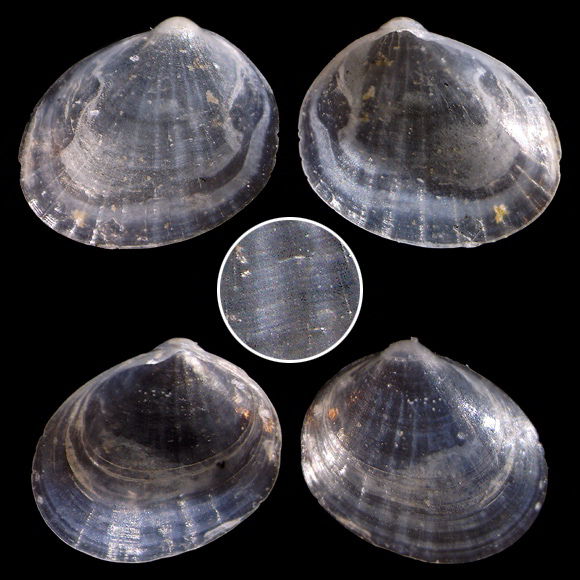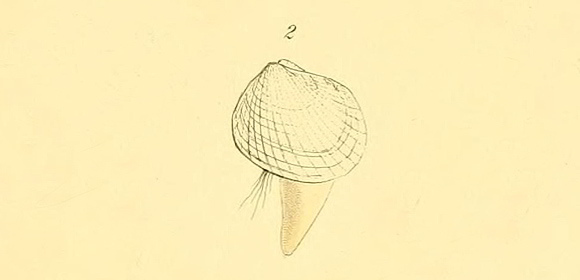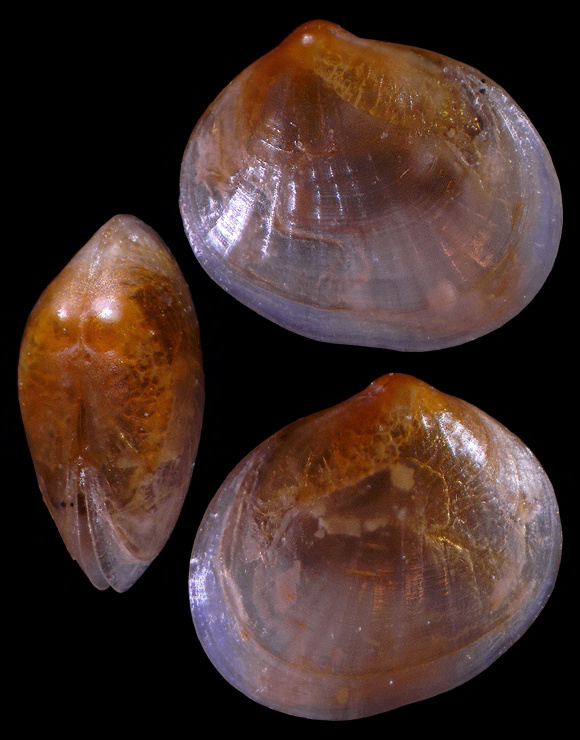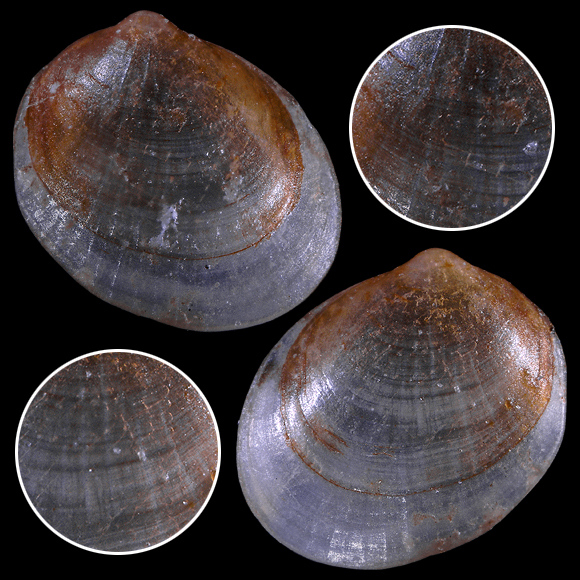
Lives as a commensal, attached by two or three byssal threads to the spines of some superficial burrower sea-urchins such as Spatangus purpureus or Echinocardium flavescens, chiefly around their oral and anal orifices, from the upper circalittoral down to the shelf, on soft bottoms. Detritus feeder.
Original taxon: Ligula substriata.
Synonym: Kellia spatangi Brusina.
Shallow grit, Port-Vendres, Occitania, S. France. 1,2-1,8mm.
Wide pallial line; despite what Turton said about the genus, there is one lateral tooth, on anterior side.

« Shell varying in shape from a long to a short oval, with an oblique outline, rather convex, not very thin, semitransparent, usually of a dull aspect, but sometimes glossy. Sculpture: about a dozen very slight and indistinct ribs, which radiate from the beak but do not quite extend to the front margin ; there are also a few white longitudinal streaks, and concentric lines of growth. […] The byssal threads by which this curious mollusk attaches itself are exceedingly strong and coarse. Mr. Clark observed it in active motion after he had separated it, still adhering to the spines, from a Spatangus. He says: “When the animal marches, its foot is extended, and its rounded termination is instantly fixed to the vase in which it is deposited ; then by the retractor muscle it is drawn forward, making such rapid progression as to cross a watch-glass in a minute, and on the passage turns itself several times by a twist of the foot from side to side.” […] The number of fry, with their shells completely formed, which are found in some individuals, is astonishing. Many hundreds of them, packed close together, and glittering like microscopic pearls, might be counted. They occupy at least two-thirds of the space enclosed within the valves of their parent ; and its own body seems to be atrophied and dwindled to a mere skeleton. The shell is in fact turned into a crowded nursery. » – J. G. Jeffreys: British conchology vol. II, London 1863.

Shell equivalve, inequilateral, more developed anteriorly; the commarginal growth lines are microscopic, the growth stops are a bit more visible; beaks strongly prosogyrate. – 85m deep, on sea-urchin, Saronic Gulf, Eastern Attikí, E. Greece. 2mm.
